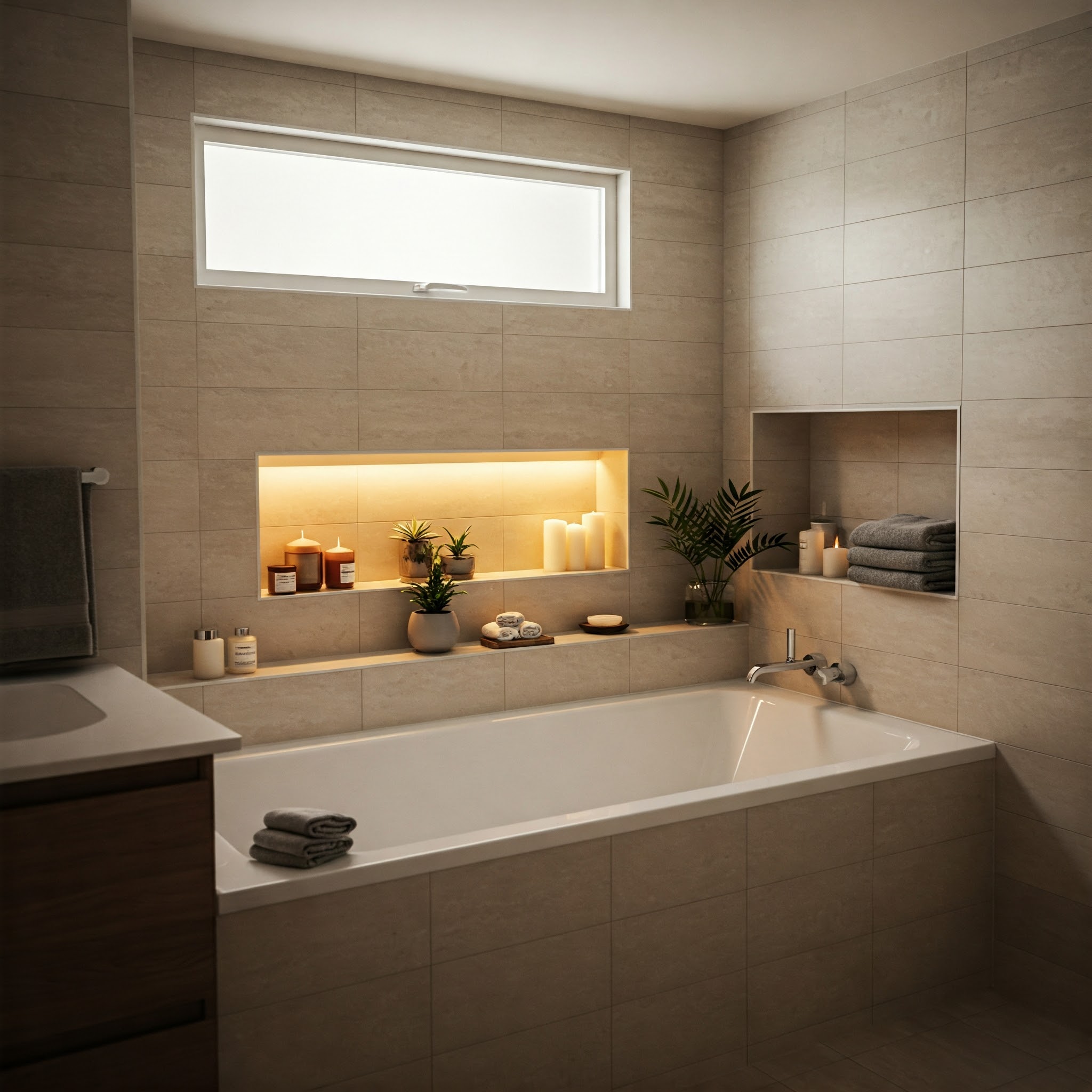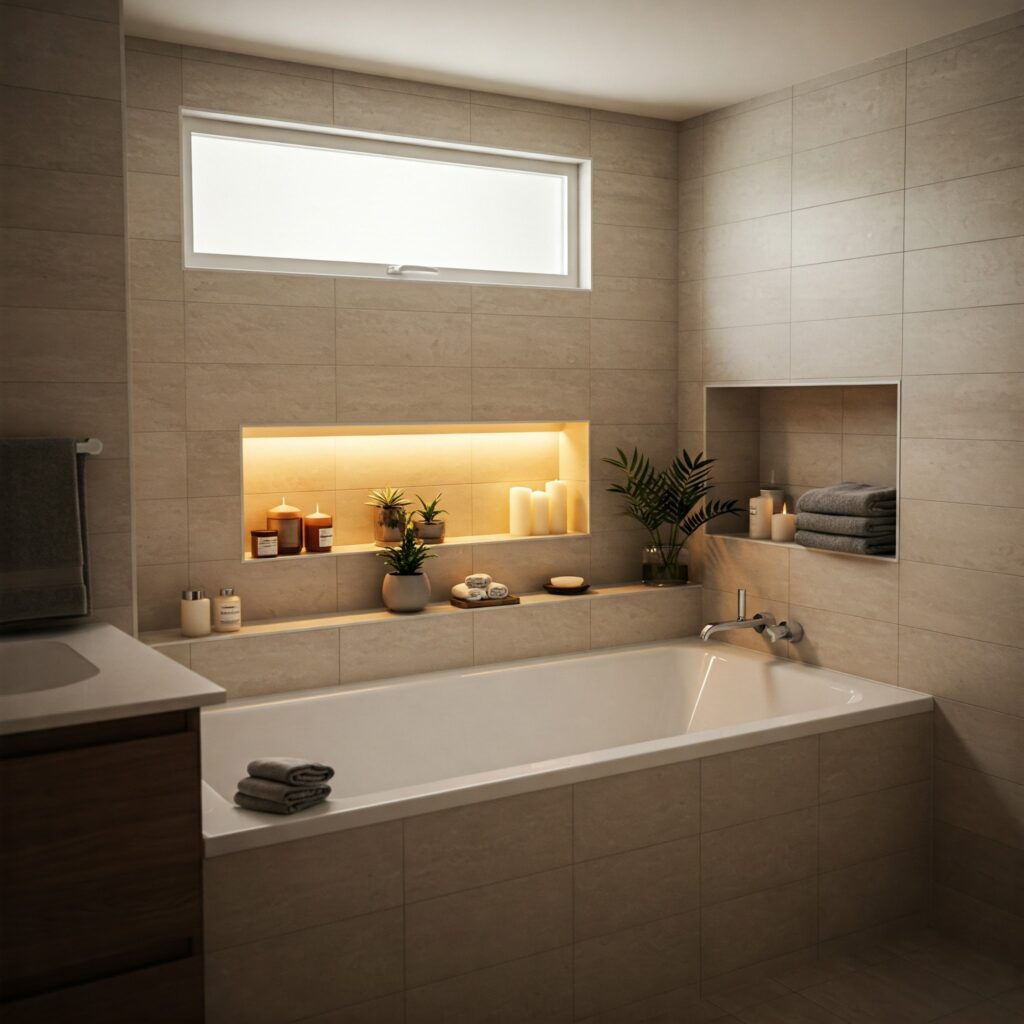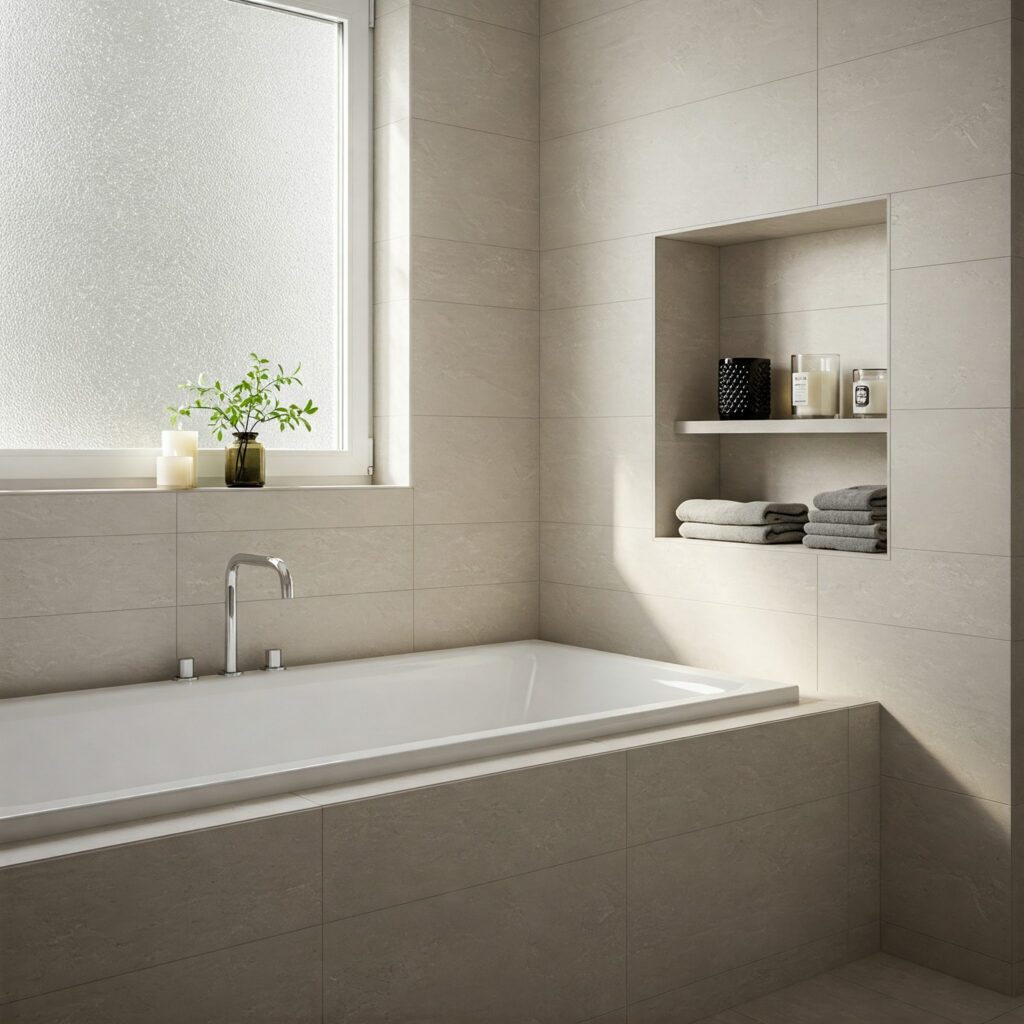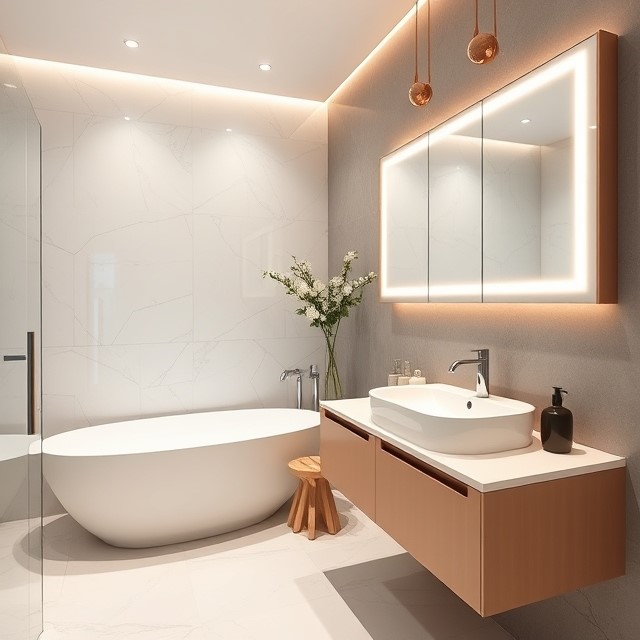Alcove Bathtubs: Back in style?

March 26, 2025

If you’re remodeling your bathroom and are considering the type of bathtub that will work best in your space, you’ve probably come across the term “alcove bathtub.” This style is one of the most popular and practical choices for homeowners. But what exactly is an alcove bathtub, and how do you know if it’s the right option for your bathroom remodel?
We’ll go into what alcove bathtubs are, explore their various styles and features, and walk you through all the pros and cons to help you figure out what is best for your bathroom. Plus, we’ll compare them to other bathtub styles, like freestanding tubs, and show you the considerations you need to make during the remodeling process.
What is an Alcove Bathtub?
An alcove bathtub is a bathtub that is installed into a three-sided enclosure, with one side typically open for easy access. The remaining three sides are usually surrounded by walls, a shower curtain, or a bathtub surround. This design makes alcove tubs a great option for bathrooms with limited space.
These tubs are typically rectangular in shape and come in various sizes, but they all share the same essential layout: they are fitted neatly into the corner or edge of the bathroom, with walls enclosing the sides.
Different Styles of Alcove Bathtubs

Alcove bathtubs come in a variety of styles to suit different tastes and preferences. Here are a few of the most common:
1. Standard Alcove Bathtubs
- Description: The most basic form, with a rectangular shape and standard dimensions (typically around 60 inches long, 30 inches wide).
- Best for: Small to medium-sized bathrooms, where space is at a premium.
- Features: Usually comes with a basic built-in tub surround for easy cleaning and maintenance.
2. Deep Soaking Alcove Tubs
- Description: These tubs are deeper than standard tubs, offering a more immersive soaking experience.
- Best for: People who want a more luxurious bathing experience but still need to fit within the confines of an alcove space.
- Features: Often includes ergonomic designs and additional water-saving features.
3. Whirlpool Alcove Tubs
- Description: A bathtub with jets installed for a spa-like experience.
- Best for: Those looking for relaxation and hydrotherapy benefits.
- Features: Offers adjustable jets that target sore muscles, along with options for heated air or water.
4. Tile-Ready Alcove Tubs
- Description: These tubs are designed with the ability to tile around the edges, providing a custom, high-end look.
- Best for: Homeowners who want a more personalized bathroom style.
- Features: The tub itself may be plain, but the tiled surround allows for creative, customized designs.
Pros and Cons of Alcove Bathtubs

When deciding if an alcove bathtub is the right choice for your bathroom remodel, it’s important to weigh the pros and cons. Here’s a breakdown of the key benefits and drawbacks of alcove tubs:
Pros:
- Space-Efficient: Ideal for bathrooms with limited space, as they fit neatly into corners or alcoves.
- Cost-Effective: Generally less expensive than freestanding tubs because they are simpler to install.
- Easy to Maintain: With three sides enclosed by walls, cleaning around the tub is easier. Plus, many alcove tubs come with built-in surrounds that are low-maintenance.
- Variety of Options: There are numerous styles, sizes, and features to choose from, whether you prefer a standard model or something more luxurious like a soaking tub or whirlpool.
- Accessibility: The design allows easy entry and exit, which is important for people with mobility issues.
- Versatile Design: You can pair alcove tubs with various finishes and styles to match the aesthetic of your bathroom.
Cons:
- Limited Aesthetic Appeal: Alcove tubs are generally more utilitarian and might not offer the same visual appeal as freestanding or clawfoot tubs.
- Size Limitations: Depending on the size of your bathroom, you might be limited to a standard-length tub (usually around 60 inches).
- Shower Compatibility: While alcove tubs can be paired with a shower, this setup can feel cramped for taller individuals, as the walls may feel confining.
- Installation Complexity: Depending on the space, installing an alcove tub could involve additional steps such as waterproofing or tiling, which may increase costs.
Alcove vs. Freestanding Tubs: A Comparison

While alcove bathtubs are often the go-to option for many homeowners, freestanding tubs have their own unique appeal. Here’s how these two styles compare:
| Feature | Alcove Bathtub | Freestanding Tub |
|---|---|---|
| Space Efficiency | Space-efficient, ideal for small bathrooms | Requires more floor space, needs room to be showcased |
| Installation Cost | Generally lower, easier to install in smaller spaces | Higher, more complex installation process |
| Aesthetic Appeal | More functional and straightforward | Often a focal point, luxurious appearance |
| Comfort | Typically more compact, can be shallow in some cases | Deeper, more spacious for soaking and relaxation |
| Versatility | Easy to integrate with shower setups | Limited to bathrooms that can accommodate them |
| Maintenance | Low-maintenance, as walls often enclose it | Can be harder to clean due to open space around it |
Which One Is Right for You?
- If you’re looking for a practical, space-saving option that’s easy to maintain, an alcove tub is a great choice.
- If you’re after a more luxurious, designer-centric feel and have the room to spare, a freestanding tub could be more your style.
Important Considerations for Your Alcove Tub Remodel
When choosing an alcove tub for your bathroom remodel, here are some key considerations to keep in mind:
- Bathroom Size: Alcove tubs are ideal for smaller bathrooms, but make sure the tub fits your space. Measure your bathroom and decide whether a standard 60-inch tub will work or if a smaller or larger option is necessary.
- Waterproofing & Surrounds: For a watertight installation, ensure that the walls around the tub are properly sealed. Choosing a tub with a built-in surround or tiling the space around it can help prevent water damage.
- Plumbing: The plumbing setup for an alcove tub is typically more straightforward than for freestanding tubs, but it’s important to verify that your existing plumbing can accommodate the tub you want to install. For more complex features like whirlpools, you may need an upgrade.
- Material Options: Alcove tubs come in several materials, including acrylic, fiberglass, and cast iron. Each material has its benefits:
- Acrylic: Lightweight, easy to maintain, and available in a wide range of designs.
- Fiberglass: Affordable but can scratch or dent over time.
- Cast Iron: Extremely durable but very heavy and more expensive.
- Comfort Features: Think about the depth of the tub, additional features like built-in armrests, and whether you want a tub with jets or a soaking tub. Choose features that will enhance your bathing experience.
- Hiring a Remodeling Expert: While installing an alcove bathtub can seem like a DIY project, there are nuances involved with plumbing, waterproofing, and ensuring proper installation. A professional remodeler can save you time, avoid costly mistakes, and provide peace of mind.

An alcove bathtub is a versatile, space-efficient option that works well for a variety of bathroom remodels. With the variety of styles, materials, and features available, you can find a tub that suits your design preferences, budget, and comfort needs. By considering factors like bathroom size, plumbing, and features, you can make the right choice for your space.
And remember, while it might seem like a straightforward project, hiring an experienced remodeler ensures that the installation is done correctly and efficiently. From proper waterproofing to choosing the best material for your needs, professional expertise can make a significant difference in the final outcome of your remodel.
If you’re ready to move forward with your alcove bathtub remodel, don’t hesitate to reach out for expert advice or a consultation. Your dream bathroom is just a step away!
SCHEDULE YOUR FREE ESTIMATE
©️ Next Level Remodeling, 2023. All rights reserved.
Website by Jetpass Media